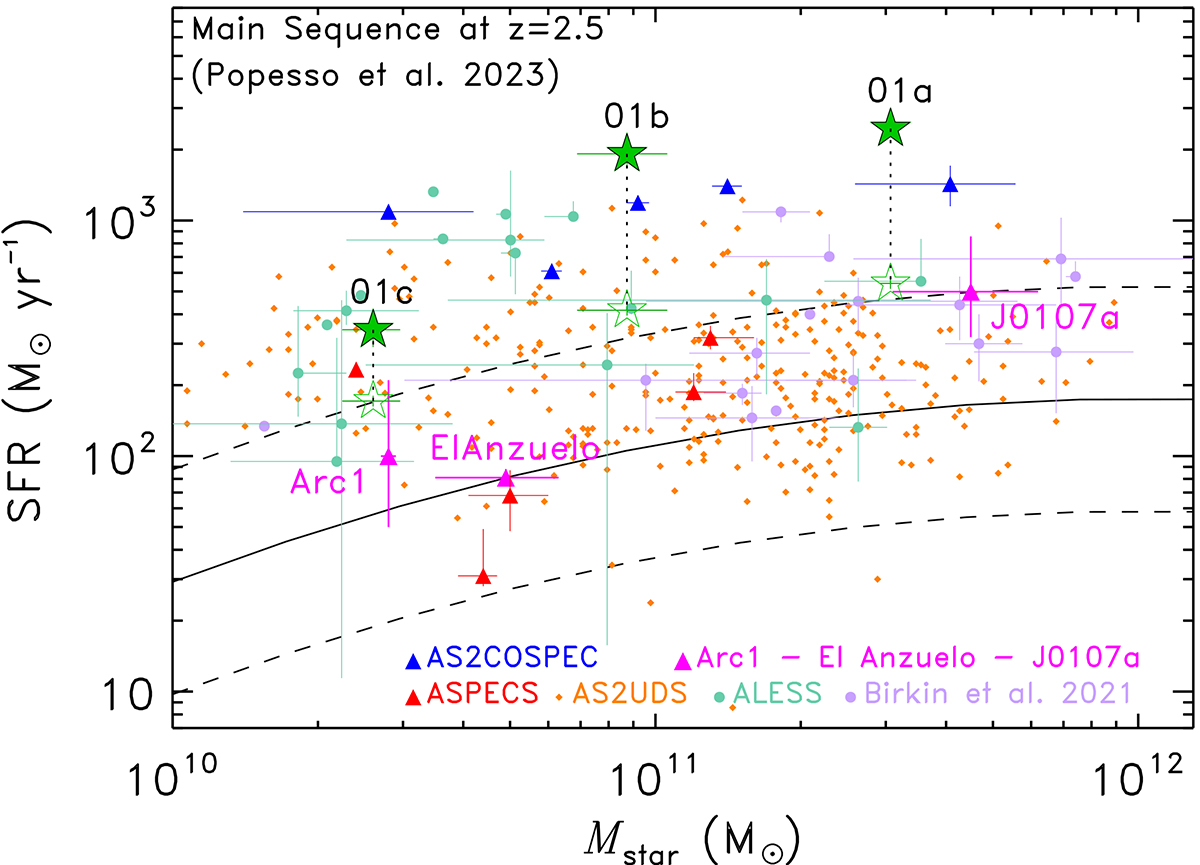Fig. 12.

Download original image
SFR as a function of the stellar mass. Filled green stars show the three selected targets. Comparison DSFGs from the literature include: the ASPECS sample of CO emitters from the Hubble Ultra Deep Field (red triangles; Aravena et al. 2019), the AS2COSPEC sample of the brightest (S870 μm > 12.4 mJy) submm sources in the COSMOS field (blue triangles; Liao et al. 2024); and the AS2UDS (small orange diamonds; Dudzevičiūtė et al. 2020) and the ALESS (small green circles; Danielson et al. 2017) flux-limited SMG samples (S850 − 870 μm > 3.6 and 2 mJy, respectively) with follow-up ALMA observations. CO observations are available for a subset (small purple circles; Birkin et al. 2021) of these samples. Labeled magenta triangles indicate three DSFGs studied in detail by JWST: ALMA J010748.3−173028 (aka J0107a) at z = 2.467 (Huang et al. 2023), Arc 1 in the PLCK G165.7+67.0 field at z = 2.24 (Frye et al. 2024) and El Anzuelo at z = 2.3 (Kamieneski et al. 2023). The solid and dashed black lines represent the main sequence of star formation at z = 2.5 and its scatter (Popesso et al. 2023).
Current usage metrics show cumulative count of Article Views (full-text article views including HTML views, PDF and ePub downloads, according to the available data) and Abstracts Views on Vision4Press platform.
Data correspond to usage on the plateform after 2015. The current usage metrics is available 48-96 hours after online publication and is updated daily on week days.
Initial download of the metrics may take a while.


